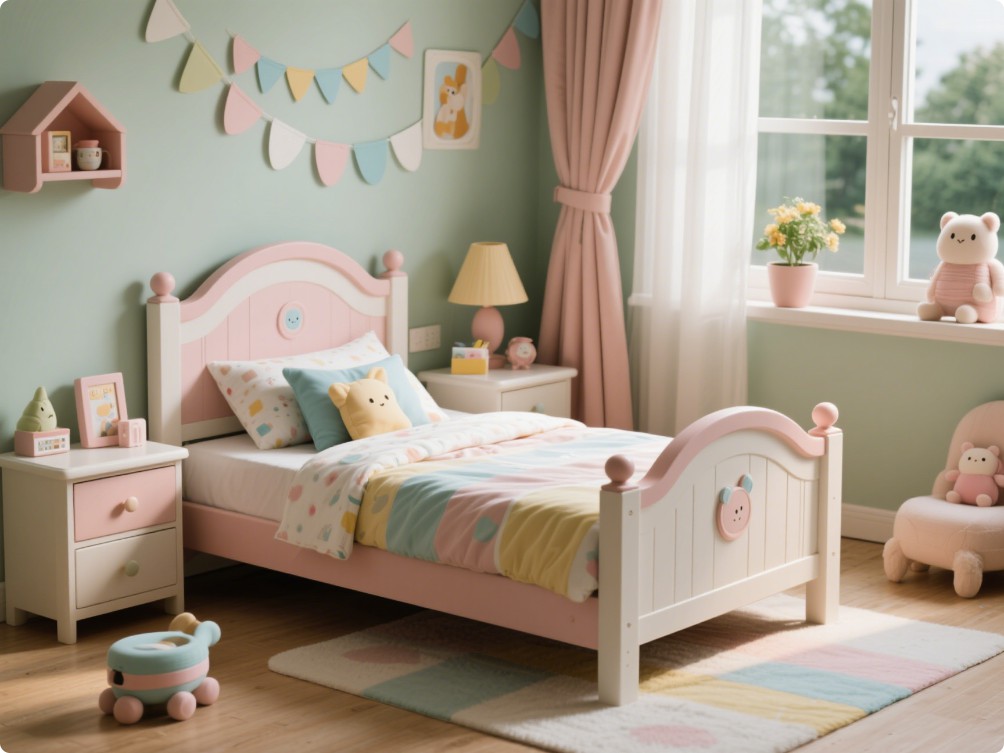When Emma and Noah found out they were expecting their first baby, a whirlwind of emotions swept through their lives. Excitement, nerves, joy, and a bit of fear tangled together as they began preparing their home for the new arrival. Among the many lists they scribbled down — bottles, diapers, tiny socks, storybooks — one item stood out, quietly demanding their special attention: the baby’s bedding.
It seemed simple enough at first. A crib, a mattress, some cute sheets. But as Emma dug deeper, she realized choosing bedding for a newborn was more than just picking adorable patterns and matching colors. It was about creating the safest, most nurturing space for the tiny human who would soon be sleeping under their roof — and in their hearts.
Late one evening, Emma sat on the floor of the soon-to-be nursery, surrounded by samples of fabrics, brochures, and notes from parenting classes. She smoothed her hand over a soft cotton swatch, then another made of a silky bamboo blend. Each option promised comfort, but Emma had learned that not all bedding was created equal — not when it came to a baby’s sensitive skin and delicate needs.
Noah joined her, carrying two mugs of chamomile tea, and sat cross-legged beside her. “Feels overwhelming, doesn’t it?” he asked with a smile, sensing the weight of her worry.
Emma nodded. “I just want to get it right. The crib has to be safe. The mattress has to be firm. And the bedding… it has to be perfect. Not just pretty — safe and gentle.”
Together, they started making decisions, one careful step at a time. The first thing they both agreed on was the importance of fabric. Babies’ skin is thinner and more sensitive than adults’, making them more vulnerable to irritation. Natural materials like organic cotton or bamboo immediately stood out. They were soft, breathable, and free from harsh chemicals — the kind of touch that would only soothe, never scratch.
They chose a lightweight, fitted crib sheet made of organic cotton. Emma ran her fingers over it, imagining how it would feel against their baby’s skin — cool in the summer, warm in the winter, and always gentle.
Pillows, heavy quilts, and loose blankets were off the list entirely. They had learned that keeping the sleep environment minimal was key to reducing risks during those precious first months. Instead, they picked a cozy, wearable blanket — a tiny, zip-up sleep sack that would keep their baby warm without any loose fabric in the crib.
Even the colors they chose were intentional. Soft, muted tones, inspired by nature — pale blues, earthy greens, creamy neutrals — to create a calming space that would help lull their baby into sweet, deep sleep. No bright, overstimulating patterns, no rough embellishments or scratchy details.
In a corner of the nursery, Emma hung a mobile made of gentle, floating clouds. It wasn’t just about beauty; it was about creating a sense of peace, of quiet wonder, where their little one could drift off into dreams safely cradled by comfort.
Weeks later, after the hospital stay and the joyful chaos of bringing their baby home, Emma tiptoed into the nursery one night. The soft glow of a nightlight washed over the room. In the crib, wrapped snugly in the softest cotton, their baby slept — tiny chest rising and falling, mouth opening and closing in tiny, sleepy sighs.
Emma leaned on the crib rail, overwhelmed by a wave of gratitude. Every careful choice they had made — every swatch of fabric considered, every decision weighed with love — had built this sanctuary of safety and comfort.
Noah came up behind her, wrapping an arm around her shoulders. Together, they watched their baby sleep, wrapped in the kind of peace that comes from being held by the world’s gentlest hands.
Choosing bedding for a baby wasn’t just about setting up a crib. It was about wrapping their child in tenderness. It was about whispering, without words: You are safe. You are loved. Sleep easy, little one.
And under that soft, breathable bedding, with the world quiet and warm around them, their baby did exactly that.
